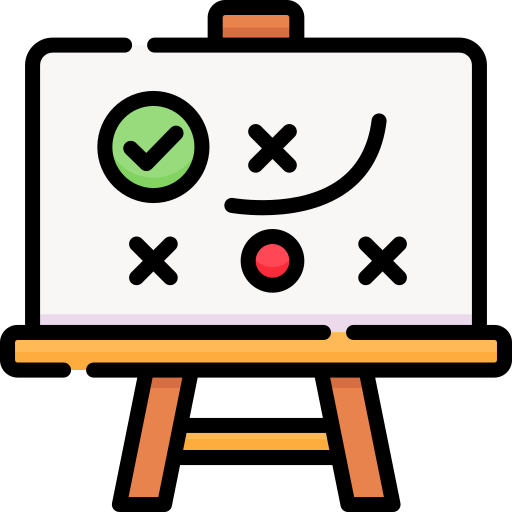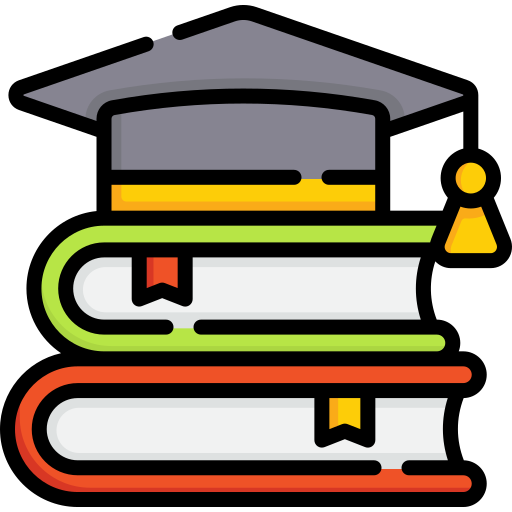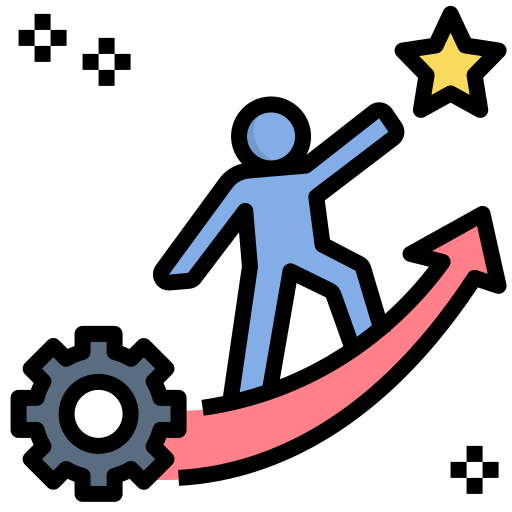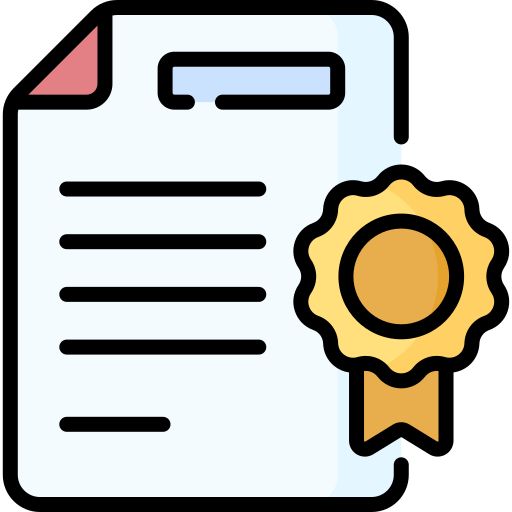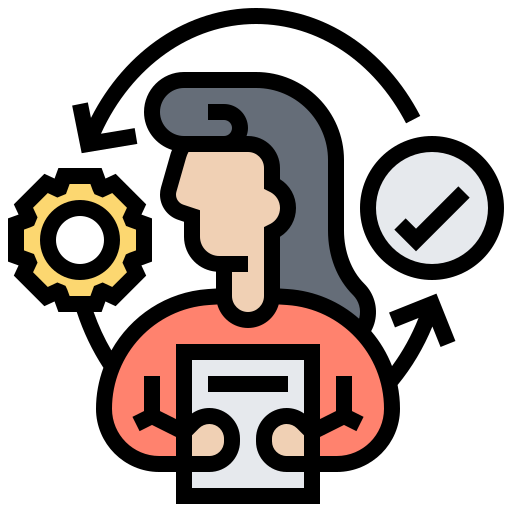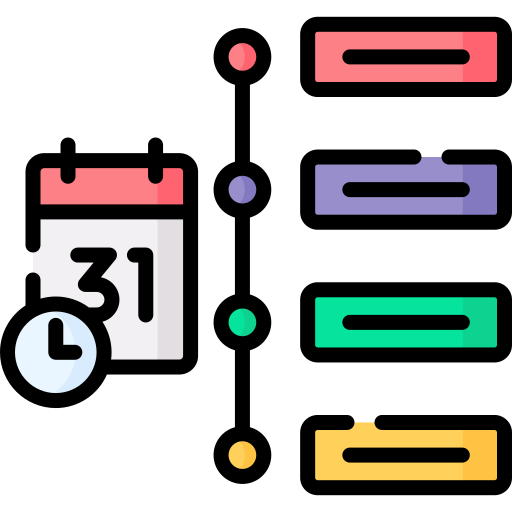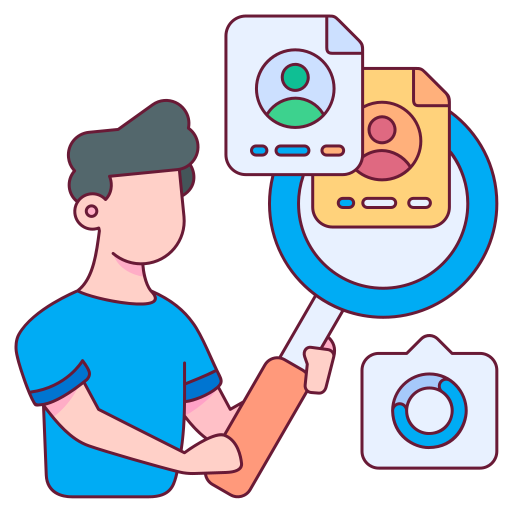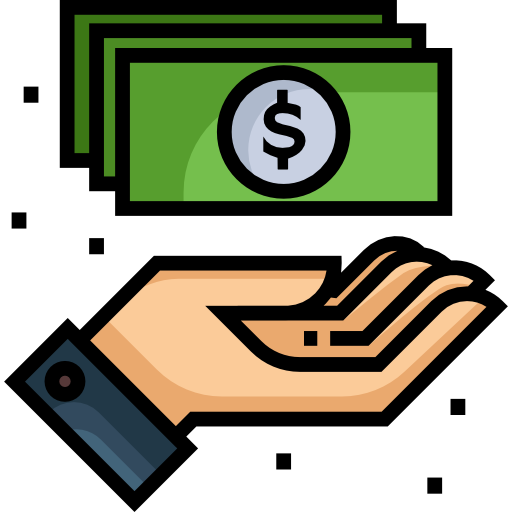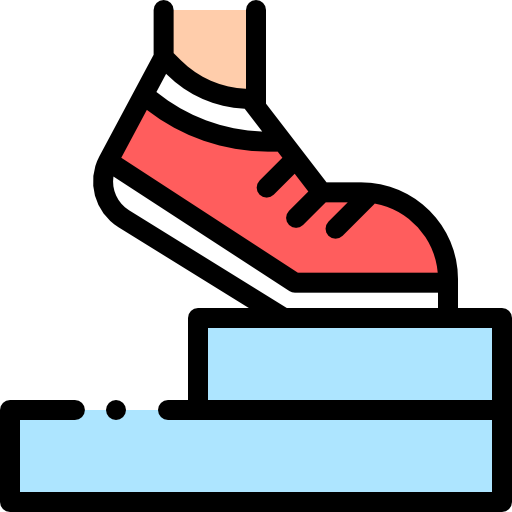You might need about two to six months to understand the basics of Python. You can pick up enough to write code for a simple program in just a few minutes—but becoming an expert in Python, especially with its extensive libraries, can take you months or even years.
Table of Contents
How to become a Python developer in 2026
There’s no better time than right now to start your career as a Python developer.
Becoming a Python developer is more attractive than ever. Python continues to grow in popularity. The TIOBE community programming index, an indicator for the popularity of languages, recently announced that Python is being used more than any other language in the world[1]. It’s hard to find a tech domain that isn’t extensively using Python in some regard.
It’s important to note: When we say Python, we are referring to Python 3, the most up-to-date and widely used version of the language.
As far as programming languages go, Python is a wonderful multi-tool to have in your collection. If you’ve never even coded before, Python may be the best jumping-off point for computer programming. It is widely known to be accessible to beginners. Its syntax is the closest to English, and therefore code is easier to understand.
In addition to being easy to read and parse, Python has a vibrant community of users who are constantly flushing out features and adding libraries. Since it is an open-source language, anyone can contribute their code to create libraries that may be used by others.
If you’re interested in learning the most popular beginner language in the world, look no further. Today, we’re breaking down the entire process to become the Python developer of your dreams. We’ll first explore steps for planning, upskilling, and gaining experience. Then, we’ll look at how long the process may take, what the overall requirements are, and how much some Python developers make.
Python is used for a multitude of applications. Depending on your interests and your existing experience, your intentions with the language may differ. We’ll hit the main specializations for Python devs, and hopefully, you’ll be able to find a fit.
We’ll cover:
- Steps to becoming a Python developer
- How long does it take to become a Python developer?
- Requirements to become a Python developer
- How much does a Python developer make?
- Next steps to becoming a Python developer
Get started with Python for free today.#
Try one of our 600+ courses and learning paths: Learn Python 3 from Scratch.
Steps to becoming a Python developer#
Not everyone will have the same exact experience on the path to becoming a Python developer. Even the most thorough plans may not pan out perfectly. Be sure to give yourself extra time and patience while doing something as important as switching careers.
Additionally, there are tons of different potential fields for a Python developer, and the one you intend to specialize in will more closely inform your own process. Some of the potential paths of a Python developer are:
- Data scientist: Use programming languages and coding skills to collect, analyze, and visualize large sets of data.
- Machine learning engineer: Design and implement algorithms and artificial intelligence to function as part of a larger data sciences team.
- Software application developer: Design, develop, troubleshoot, and update software applications of all sorts. This is a broad field that encompasses many of the classic computer programmer tasks.
- Web app developer: Design, launch, maintain, and update web pages and web applications designed for mobile and desktop.
- Software automation engineer: Optimize existing software systems by automating data-heavy processes. This is a specific information technology (IT) role.
- Game developer: Although it’s not the most common language for game developers, Python is more than capable of building 2D and 3D video games.
A multitude of other fields rely on Python as well. We won’t dive deep into them here, but if you want to research them yourself a few other popular ones are:
- Finance: The same features and libraries that make Python particularly useful in data science also make it particularly useful for finance. It can be used to assess trends in large data sets, as well as being useful for risk management.
- Task automation: Python can perform many different automations, such as website scraping, report generation, file storage management, and logging.
- Data visualization: We touched briefly on Python’s ability to map data in our definition of data scientists, but it’s one of the main draws to the language in careers that require data manipulation.
Regardless of your incoming skill level or interests you’ll need to make a plan. Planning will help you in the long run by preparing you for how long the process will take and allowing you to better realize your goals.
You can start by asking yourself a few questions:
Regardless of your incoming skill level or interests you’ll need to make a plan. Planning will help you in the long run by preparing you for how long the process will take and allowing you to better realize your goals.
You can start by asking yourself a few questions:
How do you want to learn Python?#
Getting an education is the biggest step in the whole process. Depending on the path you end up taking, it will require the most investment of time and money. It’s true that many jobs don’t specifically require a bachelor’s degree in computer science, but most employers prefer it. Regardless, there are plenty of other ways to learn computer science and Python in a way that is meaningful to you and a potential employer. Read more about the differences between a coding bootcamp and a computer science degree in this article.
It’s worth noting that while there are a wide variety of non-degree paths, these will typically prepare you for junior roles following your education.
What areas of Python interest you?#
As mentioned above, there are tons of different applications when it comes to Python. As you get experience with coding and the Python language you’ll likely have a solid idea of what you like and what you don’t, but it’s crucial to consider this beforehand. If you seek out as many different experiences as you can, you’ll be a more well-rounded programmer and also have a solid understanding of where you want your career to go. If you have doubts about a certain field that you’ve chosen to get experience in, don’t worry. Simply allow yourself the time and space to adjust your plan and find something that you enjoy. The sheer variety of Python applications may seem daunting, but it means that there is something out there for everyone. Time estimate: Everyone will take a different amount of time planning their own path, so we can’t give you a concrete estimate here. That said, don’t hold yourself too strictly to your own plan. Even the most meticulous plans may go awry, so be patient with your own path and remember to embrace the plot twists.
Education type | Typical time investment | Advantages | Disadvantages |
Bachelor's degree + Master's degree in CS or related field | 4 years + 2 years |
|
|
Bachelor's degree in CS or related field | 4 years |
|
|
Associate's degree + bachelor's degree in CS or related field | 2 years + 2 years |
|
|
Full-time coding bootcamp | 12 weeks |
|
|
College/university certificate | 1 to 2 years |
|
|
Self-study | 12 weeks to multiple years |
|
|
Time estimate: Excluding the time it takes to apply and wait for your program of choice to start, your education could take anywhere from 12 months to six years.
For better or worse, most organizations want to hire candidates with real-world experience. This can pose a paradoxical problem to students or recently educated programmers. How can you get your foot in the door if companies will only hire those with experience? Sometimes you can find someone willing to take a chance on you, but most of the time you’ll have to get experience another way.
There are plenty of other options to stand out to potential employers and make your resume more interesting to hiring managers.
- Intern for a company
- Sign up for a hackathon
- Contribute to open-source projects or work on personal projects
If you’re enrolled in a degree program or a coding bootcamp, it’s likely that there are resources for you to uncover opportunities and network. If you’re self-educating, you’ll have to do a little more of the heavy lifting yourself. Regardless of your situation you should look into:
- Creating a portfolio
- Updating your resume
- Building your own coding projects
- Working on open-source projects
- Building your brand
It’s a good idea to keep track of whatever you work on in a portfolio. This will pay dividends when you end up looking for jobs, and the more attention you give to documentation now, the more prepared you’ll be when asked about it during an interview.
Time estimate: Budget at least a few months to get real-world experience. Most internships last at least three months, though it’s perfectly reasonable to get experience concurrent with your education.
Compare and contrast: There is a difference between a certification and a certificate. Certifications are industry specific and typically provided by tech organizations. They denote your ability to perform a technical task. Certificates are typically offered through colleges and universities, and provide a crash course in a professional field.
There are many different certificates offered by universities or colleges. They are typically structured for those who already work 40 hours a week and can be in-person, online, or completely asynchronous.
Certifications are a great way to stand out to employers, and can even be used as a bargaining chip when it comes time to negotiate or adjust your salary.
Some popular Python-specific certifications include:
- PCEP – Certified Entry-Level Python Programmer
- The Python Institute has a host of Python certifications, the one above is intended for beginners
- Professional Certificate Program in Data Science
- Certificate in Python programming
Time estimate: Certifications take varying amounts of time. The quickest can be completed in only a few months, but others may take one or two years depending on content and scheduling.
The more prepared you are for your job search the more efficient it will be. Before you start submitting applications, consider the following:
-
Network: Use LinkedIn and other social media to connect with fellow alumni or other Python developers, especially if they work for companies you’re interested in.
- Attend Python conferences, which often feature job fairs and provide great opportunities to meet passionate developers already working in the industry.
-
Create a portfolio: We also included this in the “Get real-world experience” section, but only because it is so important. Having a portfolio of work that you’re prepared to talk through is crucial when it comes time to interview.
-
Prepare for interviews: Solve coding challenges, study common technical and behavioral questions, and be prepared to talk about specific experiences from your journey so far.
Time estimate: It may seem like a long time, but we recommend spending a few months on this step. Failing a technical interview is never fun.
Browse any or all of these sites to find jobs worth applying to. We recommend keeping a spreadsheet or some form of documentation to track your job applications, because it is easy to forget the particulars of each job during the search.
Time estimate: It’s hard to know how long the job search will take, because there are so many factors to consider. Most of the time it will take at least several months even if employers are responding promptly and scheduling interviews. The time between applying and hiring will vary depending on the hiring manager and recruiter.
Don’t be conservative with how many applications you submit, and try not to get discouraged if you find yourself in a streak of rejection. A lot of the time, it comes down to putting yourself out there and being persistent.
What’s new in Python 3.13 (and why it matters)#
Python isn’t standing still—it continues to evolve, and version 3.13 brings some of the biggest changes yet. For new developers, it’s important to understand these features at a high level so you’re ready for real-world applications.
No-GIL (Global Interpreter Lock): Python’s experimental “free-threaded” build removes the GIL, unlocking better concurrency and performance for multi-threaded apps.
JIT compilation: A new Just-In-Time compiler speeds up execution for many workloads.
Improved error messages and typing: Better developer experience and type hints make writing and maintaining code easier.
You don’t need to master these features right away, but being aware of them helps you understand why Python is still one of the most future-proof languages to learn.
If you’ve been doing the math along the way, you’ll know that the total time it takes to become a Python developer varies greatly. It may take anywhere from a few months to several years to fully reach your Python developer dreams depending on several factors.
- Your prior technical knowledge: How much do you know about Python or your prospective area of work?
- Your work experience: How well does your work history align with this new career venture?
- Earlier education: What level of education do you have to start the process?
- Career goals: If you’re aiming to start as a junior developer and work up, you’ll be employable sooner than if you aim to be a senior machine learning engineer.
- Job market: The time it takes is also greatly influenced by economic factors well out of your control. If there are few jobs available and competition is high, be prepared to spend more time upskilling and searching for jobs.
It’s an ambiguous answer, but there are so many different Python applications and even more jumping-off points depending on your personal situation. If you already have a bachelor’s in computer science and have used Python before you’re already well on your way.
If the job market is healthy and you are equipped with a workable portfolio, it may take only a few months until you find yourself getting paid to use Python. If you’re starting from scratch and want to get a degree, don’t fret. Just be prepared to spend several years to get where you want to go. Luckily, the tech industry and Python aren’t going anywhere anytime soon.
Education#
Learning Python is essential no matter what Python role you aim to end up in. As mentioned previously, a degree is not required, but many employers prefer candidates with a bachelor’s in computer science or a related field. That said, there are other ways to learn Python and prove your knowledge to potential employers, be it a coding bootcamp, certificate program, or dedicated self-study.
Relevant experience#
You’ll need experience before you can land a Python developer job. Most employers won’t even consider candidates without proven programming experience. The overall requirements for how much experience you need will vary depending on the seniority and the specialization of the role. Your individual stipulations for experience will fluctuate depending on what Python field you intend to pursue. That said, the main ways to get meaningful experience from the jump are:
- Internships: Get real-world work experience in your field and potentially receive an offer directly through the internship program.
- Professional certifications: A great way to prove your competitiveness to a potential employer all while learning technical and relevant skills.
Technical skills#
Your education and experience will do wonders for your developing technical skills, but chances are they won’t be comprehensive. It’s likely that you’ll have to do some of your own research to unlock niche technical practices.
There are different technical skill sets for every Python specialization. We’ll do our best to cover the highlights of each here.
Specialization | Skills and technologies | Education and experience |
Data scientist |
|
|
Web app developer |
|
|
Machine learning engineer |
|
|
Game developer |
|
|
Software automation engineer (IT) |
|
|
Soft skills#
In addition to all of your education, experience, and technical skills, you’ll need to embody a certain set of characteristics that help you stand out to employers.
- A stickler about optimization
- Analytical problem-solving skills
- Tenacity
- Communication and teamwork
- Eagerness to learn
These skills should be apparent to potential employers through the interview process. Many hiring managers and recruiters will ask interview questions specifically to give you an opportunity to show off some of these soft skills that aren’t visible in your resume or portfolio.
Because there are so many different technical specializations to skill into for Python developers, it can be tricky to nail down one pay-range estimate. We’ll break down what certain specializations of Python developers may make on average according to the
- Data scientist: $108,660 per year
- Software developer (general): $110,140 per year
- Machine learning engineer: $131,490 per year
- Computer systems analyst: $99,270 per year
- Web developer: $77,200 per year
Remember that these numbers are just averages, so your actual salary might end up being higher or lower than these values.
Regardless of your field of study or your projected career path, the opportunity for growth in tech and programming jobs is remarkable. As your experience and role tenure increase, your salary will too. Starting by learning Python can help you break into some of the highest-paying jobs in tech.
Pro tip: Glassdoor allows current and past employees to submit anonymous reviews regarding their compensation and their company’s culture.
Get started with Python for free today.#
Try one of our 600+ courses and learning paths: Learn Python 3 from Scratch.
Using AI as a learning companion (the right way)#
AI assistants like GitHub Copilot and GPT-based tools have changed how developers write code. They can help you write boilerplate code, understand errors, and even explain unfamiliar concepts. But they should support your learning — not replace it.
Best practices:
Use AI to explore solutions, then write the code yourself.
Always review and test AI-generated code for correctness and security.
Ask AI tools why a solution works, not just what the solution is.
Handled correctly, AI can dramatically speed up your learning curve and make you a more effective developer.
Your 2026 Python toolkit: Tools you should know#
Python developers today are expected to be comfortable with a modern development toolchain. Here’s what to learn:
uv: A blazing-fast package and project manager that replaces pip and virtualenv workflows.
pipx: For installing and running Python CLI tools in isolated environments.
Ruff + Black: Tools for linting and formatting your code automatically.
Mypy: Type checker to catch bugs before runtime.
pytest: The go-to testing framework for Python projects.
Learning these tools early will make your code more professional, maintainable, and production-ready—qualities employers look for in junior developers.
If you’ve made it all the way to the end of this article, you should have a good idea of what it will take to become a Python professional. We covered what the steps of the journey look like, how long it will take, what the requirements are, and what you can expect to be paid.
Now you should start by making your own career plan. From here it’s totally up to you for how you approach this next career journey. Once you have the makings of a plan in place, you can start learning to code. No matter what level of experience you have, Educative offers hands-on courses with built-in coding environments to broaden your technical skills without ever leaving your browser.
If you’re brand new to coding or Python in general, there is no better place to start than our complete skill path: Zero to Hero in Python. This path starts with a basic overview of programming and an introduction to syntax in Python. It expands upon these basics by introducing higher-level concepts, like functions and loops. In the end, you should be able to create your own basic applications in Python.
Happy learning!
Continue learning about Python#
Frequently Asked Questions
Can I learn Python in three months?
Can I learn Python in three months?
What does a Python developer do?
What does a Python developer do?
